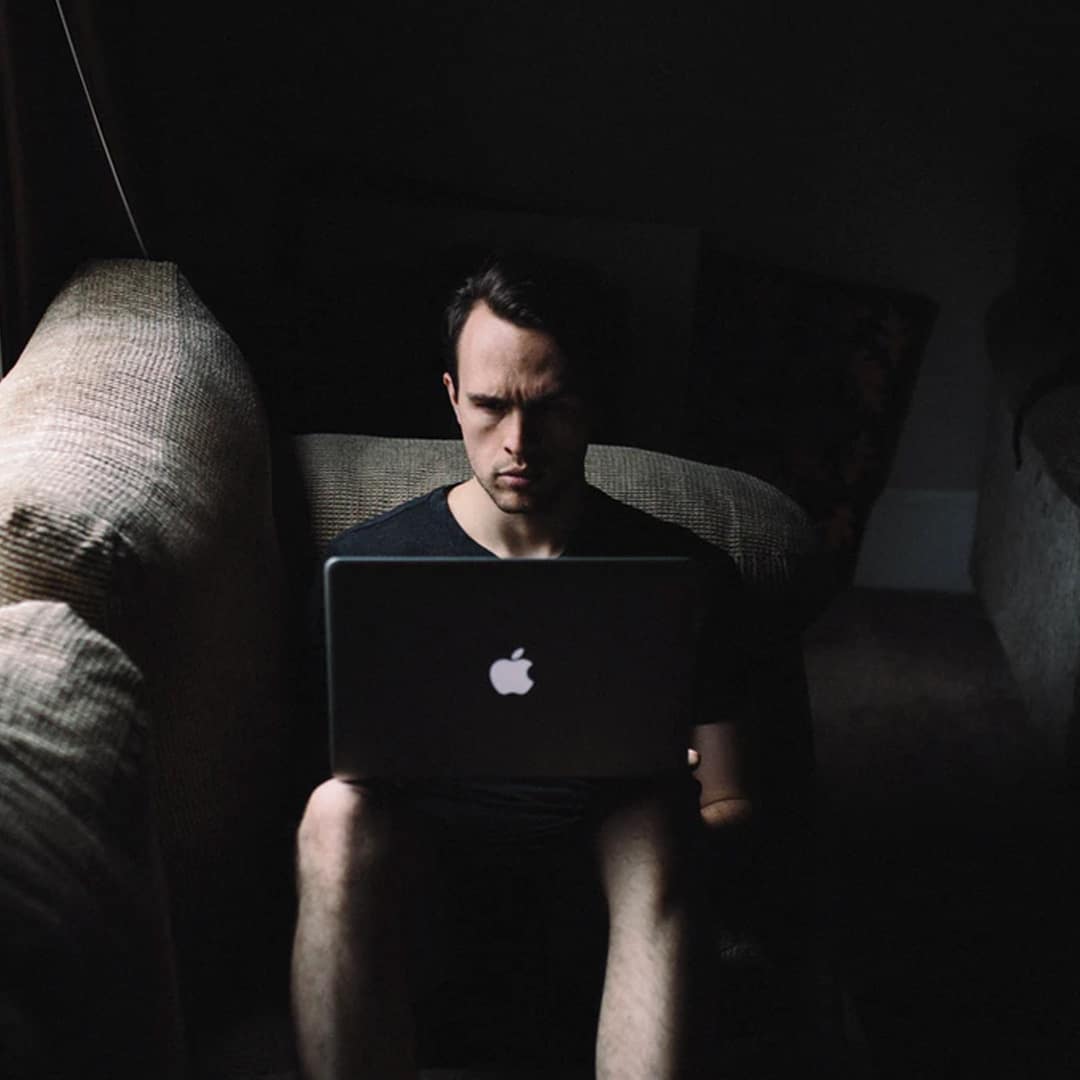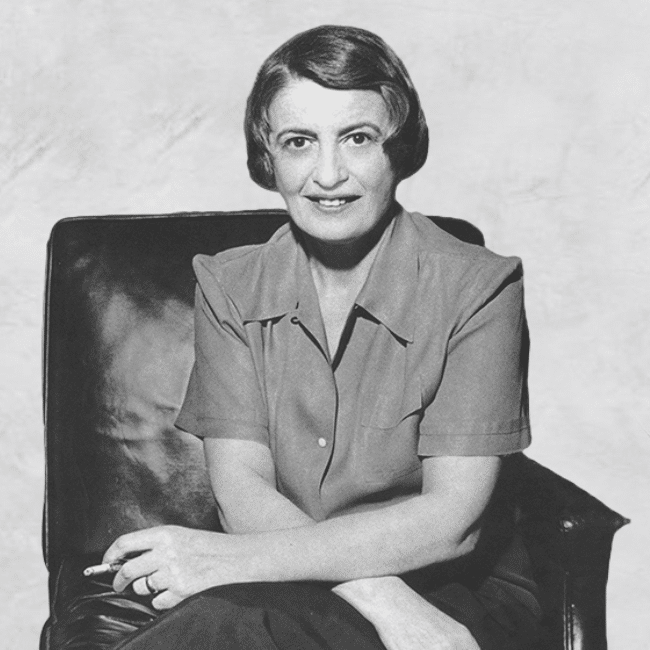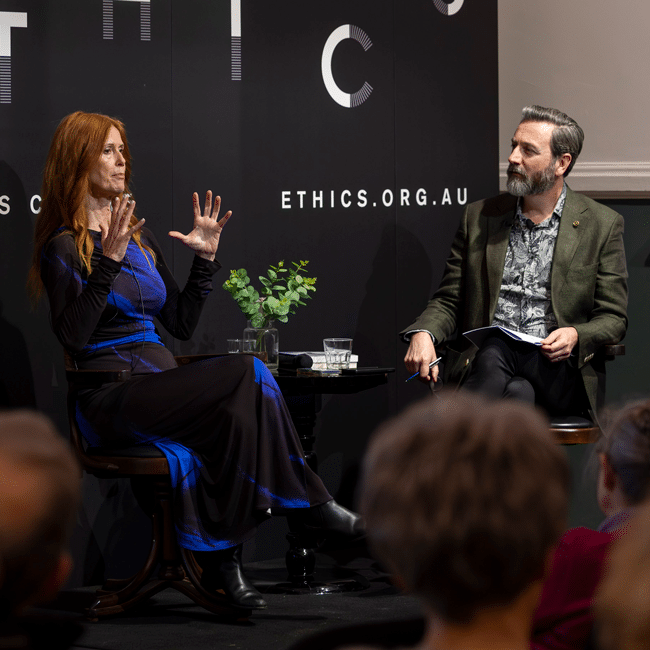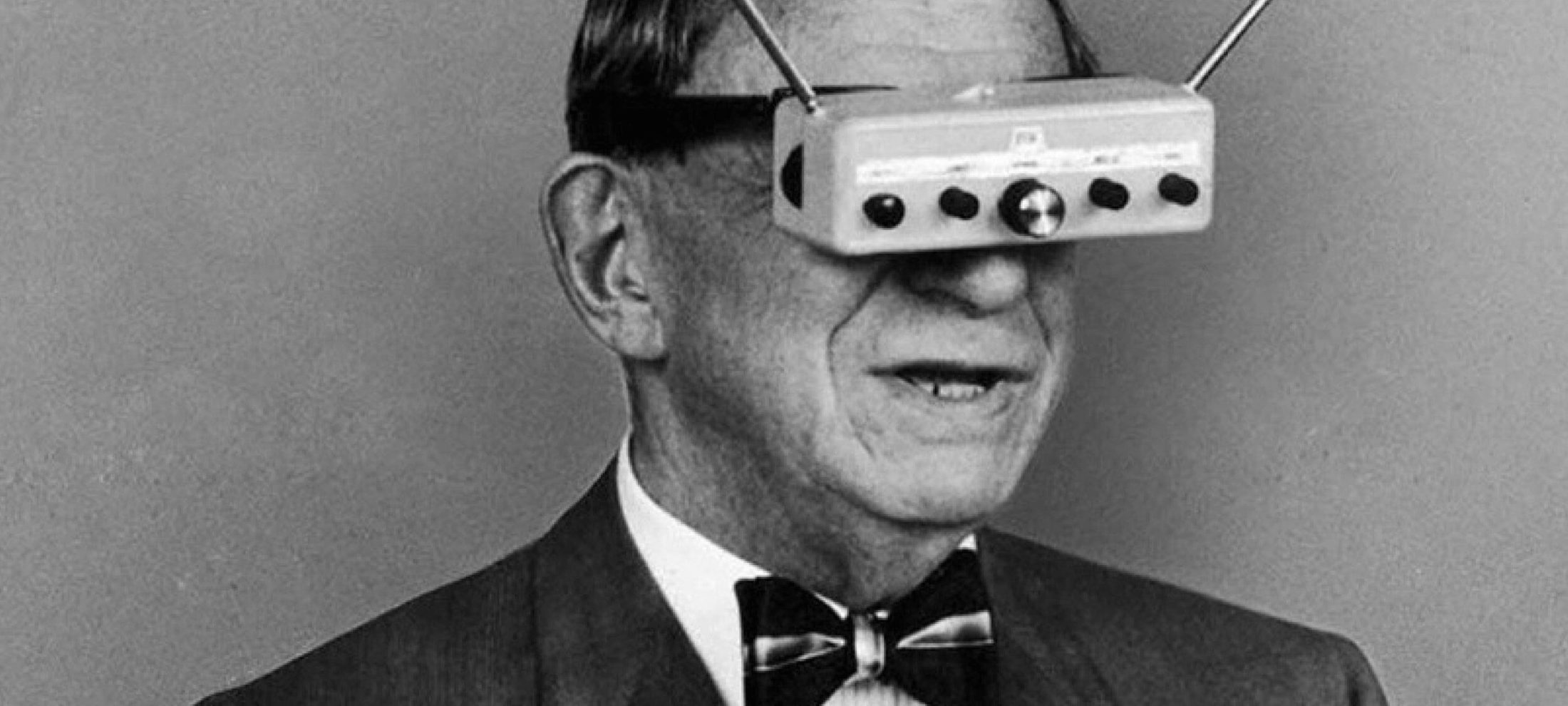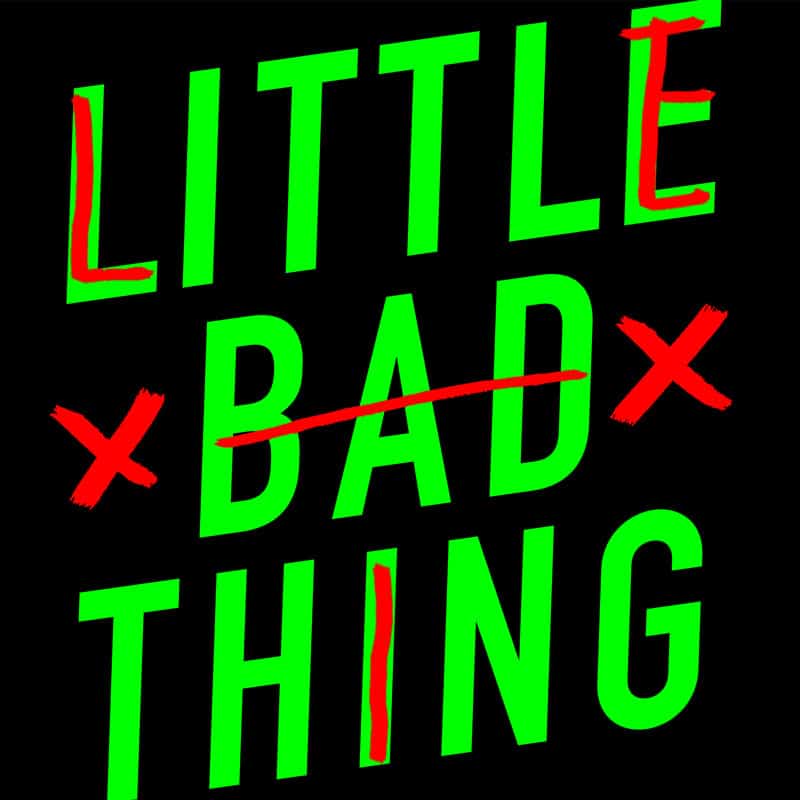The energy debate to date – recommended reads

The energy debate to date – recommended reads
Opinion + AnalysisClimate + Environment
BY The Ethics Centre 18 AUG 2018
Australia, we put it to you. ‘Is it too soon to ditch fossil fuels?’ We’ve waded through political waters and presented our shiniest pearls for your perusal.
Cheat Sheet
From NEG to Finkel and the Paris Accord – what’s what in the energy debate
The Ethics Centre
18 October 2018
Before action must come knowledge. And before knowledge must come sorting through a heap of confusing, jargonistic, off-putting acronyms, reviews, and accords. Worry not, we’ve got your back and did it for you. Our cheat sheet will brush you up on all those names that keep getting dropped in the Australian energy debate like they’re hot coals.
Video
Australia’s energy crisis: “Absolute shambles, national embarrassment and a disgrace”
7.30, ABC News
Ian Verrender
13 Feb 2017
This 7.30 report is a perfect backgrounder to the mess that is Australia’s energy crisis. The NEM broke leaving hot and bothered South Australians without electricity (you read the cheat sheet so you know the NEM is a fancy acronym for the grid). A Victorian power plant that supplied 20 percent of the state’s energy simply closed shop. Renewables are unreliable but fossil fuels are killing the planet. Holy calamity!
Interactive
They Vote For You – How does your MP vote on the issues that matter to you?
Open Australia Foundation
If you’re rearing to parade your opinion, hold on. Haste makes waste. While we’re between elections, how about taking a look at how your local MP voted on energy? Did they champion a fast switch to renewables or continued support for fossil fuels like coal and gas? Forget what they said in the run up to an election and check out what they did.
Movie
And one for fun. Maybe a post-apocalyptic energy crisis isn’t so bad if we can also have double-necked flame guitars.
Ethics in your inbox.
Get the latest inspiration, intelligence, events & more.
By signing up you agree to our privacy policy
You might be interested in…
Explainer
Climate + Environment
Ethics Explainer: Longtermism
Opinion + Analysis
Climate + Environment, Politics + Human Rights, Relationships
This is what comes after climate grief
Opinion + Analysis
Climate + Environment, Health + Wellbeing
Gen Z and eco-existentialism: A cigarette at the end of the world
WATCH
Business + Leadership, Climate + Environment, Science + Technology
How to build good technology
BY The Ethics Centre
The Ethics Centre is a not-for-profit organisation developing innovative programs, services and experiences, designed to bring ethics to the centre of professional and personal life.
Ethics Explainer: Authenticity

Is the universe friendly? Is it fundamentally good? Peaceful? Created with a purpose in mind?
Or is it distant and impersonal? Indifferent to what you want? A never ending meaningless space? We all have ideas of how the world truly is. Maybe that’s been influenced by your religion, your school, your government, or even the video games you played as a kid.
Whatever the case is, how we think about ourselves and what we consider a life well spent, has a lot to do with the relationship we have with the world. And that brings us to this month’s Ethics Explainer.
Authenticity
To behave authentically means to behave in a way that responds to the world as it truly is, and not how we’d like it to be. What does this mean?
Well, this question takes us to two different schools of thought in philosophy, with two very different ideas of the nature of the world we live in. The first one is essentialism. Now, essentialism is a belief that find its roots in Ancient Greece, and in the writings of Socrates and Plato.
They took it as a given that everything that exists has its own essence. That is, a certain set of core properties that are necessary, or essential, for it to be what it is. Take a knife. It doesn’t matter if it has a wooden handle or a metal one. But once you take the blade away, it becomes not-a-knife. The blade is its essential property because it gives the knife its defining function.
Plato and Aristotle believed that people had essences as well, and that these existed before they did. This essence, or telos, was only acquired and expressed properly through virtuous action, a process that formed the ideal human. According to the Greeks, to be authentic was to live according to your essence. And you did that by living ethically in the choices you make and the character you express.
By developing intellectual virtues like curiosity or critical thinking, and character virtues like courage, wisdom, and patience, it’d get easier to tell what you should or shouldn’t do. This was the standard view of the world until the early 19th century, and is still the case for many people today.
The rise of existentialism
But some thinkers began to wonder, what if that wasn’t true? What if the universe has no inherent purpose? What if we don’t have one either? What if we exist first, then create our own purpose?
This belief was called existentialism. Existentialists believe that neither us nor the universe has an actual, predetermined purpose. We need to create it for ourselves. Because of this, nothing we do or are is actually inherently meaningful. We were free to do whatever we wanted – a fate Jean Paul-Sartre, French existential philosopher, found quite awful.
Being authentic meant facing the full weight of this shocking freedom, and staying strong. To simply follow what your religious leader, parent, school, or boss told you to do would be to act in “bad faith”. It’s like burying your head in the sand and pretending that something out there has meaning. Meaning that doesn’t exist.
By accepting that any meaning in life has to be given by you, and that ‘right’ and ‘wrong’ are just a matter of perspective, your choices become all you have. And ensuring that they are chosen by the values you accept to live by, instead of any predetermined ones etched in stone, makes them authentic.
This extends beyond the individual. If the world is going to have any of the things most of us value, like justice and order, we’re going to have to put it there ourselves.
Otherwise, they won’t exist.
Ethics in your inbox.
Get the latest inspiration, intelligence, events & more.
By signing up you agree to our privacy policy
You might be interested in…
Explainer
Relationships
Ethics Explainer: Scepticism
WATCH
Relationships
Deontology
Opinion + Analysis
Relationships
Online grief and the digital dead
Opinion + Analysis
Relationships
Come join the Circle of Chairs
BY The Ethics Centre
The Ethics Centre is a not-for-profit organisation developing innovative programs, services and experiences, designed to bring ethics to the centre of professional and personal life.
New framework for trust and legitimacy

New framework for trust and legitimacy
Opinion + AnalysisBusiness + Leadership
BY The Ethics Centre 17 AUG 2018
In our report The Trust, Legitimacy & the Ethical Foundations of the Market Economy, we outline why legitimacy is more important than trust to the success of Australian companies and must be underpinned by an ethical framework.
It’s a distinction between trust and legitimacy that must be understood by corporations today who are facing a precipitous decline in levels of public trust. Trust is wholly dependant on legitimacy, which can only be maintained when performance is linked to a legitimate purpose and guided by a core ethical framework. While trust in corporations, can be compensated for by increased surveillance, legitimacy once lost, cannot be recovered at any cost.
This report draws on philosophical thinking to identify a minimum threshold of four fundamental values and principles companies must meet to maintain legitimacy: respect people, do no harm, be responsible, and be transparent and honest.
Dr Simon Longstaff AO, The Ethics Centre’s Executive Director and co-author of the paper says “The privileges of incorporation and limited liability were justified by a broad appeal to the common good. If those privileges are to be preserved, then it may be time to establish a new, core ethical foundation for corporations.”
“This framework must enable agility and protect against the risks of poor decision-making. An alternative and complementary approach to more compliance is to establish a values and principles framework that guides rather than dictates decision-makers.”
The report includes threshold indicators for the four fundamental values and principles identified to help companies undertake a legitimacy self-assessment.
The full report can be accessed here: trustandlegitimacy.com.au
Ethics in your inbox.
Get the latest inspiration, intelligence, events & more.
By signing up you agree to our privacy policy
You might be interested in…
Opinion + Analysis
Business + Leadership, Politics + Human Rights
Survivors are talking, but what’s changing?
Opinion + Analysis
Business + Leadership, Health + Wellbeing
Navigating a workforce through stressful times
Opinion + Analysis
Business + Leadership
How cost cutting can come back to bite you
Opinion + Analysis
Business + Leadership, Relationships
The transformative power of praise
BY The Ethics Centre
The Ethics Centre is a not-for-profit organisation developing innovative programs, services and experiences, designed to bring ethics to the centre of professional and personal life.
How to break up with a friend
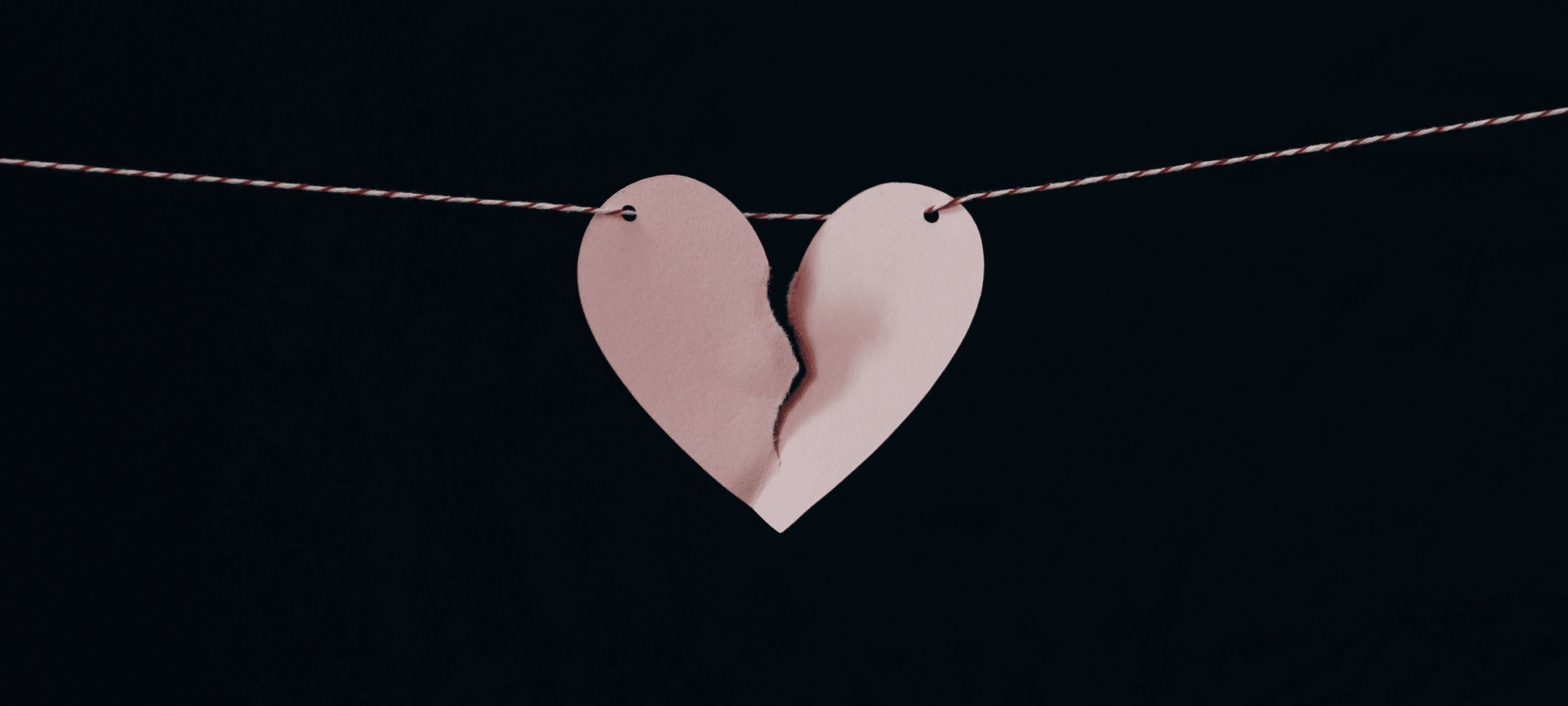
How to break up with a friend
Opinion + AnalysisHealth + WellbeingRelationships
BY Aisyah Shah Idil The Ethics Centre 16 AUG 2018
If your friendship is a battlefield, you’ve got to know when to wave the white flag. How do you break up with a friend – ethically?
It might’ve been a slow fade after leaving high school. A messy split over unpaid bills. Maybe it was an awkward part at the airport, or a text silence that lasted a few months longer than usual.
Though not as lamented as ending a romance, ending a friendship can be just as painful. Maybe even more. While some of that is because of the hurt and disappointment of any unfulfilling relationship, another part can be attributed to its ambiguity.
The due process owed to an ex (counselling, teary conversations, logical explanations to well-meaning buddies and family) doesn’t exist for the friendships in our lives. If we want to break up with a friend, how do we do it ethically?
If you’re keen to rip off the friendship band-aid, keep reading. Here are some questions our Ethi-call counsellors would ask to help you act in line with your morals and values.
1. What is the purpose of friendship?
Let’s get back to basics. Asking yourself what a good friendship looks like can help you see if there’s a disconnect between what you’d like it to be and what it really is.
A good friendship could be one where you:
- Love and accept each other
- Are role models for each other’s children
- Feel safe expressing your honest thoughts
- Feel grateful that you share each other’s lives
If any of these questions cause discomfort, maybe your friendship has crossed a line it shouldn’t have. What is your duty to yourself? Is it fair to expect these things?
2. How could you create the least harm and most benefit?
Owning that your needs aren’t being met is important. But equally as important are the needs your friend is owed in a reciprocal relationship.
- What are your obligations to your friend?
- Have you any part to play in this?
- What would a wise person suggest?
Every relationship takes effort. Part of loving someone, warts and all, is acknowledging the effort is worth it. But when that isn’t true, a breakup may not be the only way to deal with it. Consider if your actions are going to cause more benefit than harm – to all the people involved.
- What are the consequences (of a friendship breakup)?
- Is doing nothing an option? If so, what would be your tipping point?
- What will the lasting impact be?
A breakup isn’t the end of anyone’s story. People carry these formative experiences with them and may do so for the rest of their lives.
3. How can you preserve and prioritise dignity?
If you’ve considered all this and still think you need to end the friendship, remember to be kind. Considering why you were friends in the first place means this transition isn’t about kicking anyone when they’re down.
How will you break up? Does your friendship lend itself to a face-to-face conversation or is it better through email? Is one session or message enough or are more required?
Your friend might not agree with what you consider to be good and right, but handling such a delicate situation in a way that is in line with your moral character might be one of your greatest accomplishments.
Some positive outcomes might even eventuate, such as:
- Renewal of your friendship and commitment to each other
- Knowing that you both did your best
- Revelation in self-knowledge and commitment to personal growth
- Speaking well of each other to mutual friends (and meaning it)
- Shared sense of closure and grief
Friendships and relationships don’t exist in vacuums. Whether good or bad, a history of contact with each other comes with its own particular language, traditions and memories. None of us are the centre of the universe, and believing so runs counter to the reality of multiple subjective experiences. Continuing on that path can not only make it harder for you to be a friend, but for you to be fully human.
Even if it wasn’t love, you shared each other’s lives. And that’s always worth respecting.
If you or someone you know is at risk of harm or feeling suicidal, get help immediately. Call Lifeline 13 11 14 or 000 if life is in danger.
Ethics in your inbox.
Get the latest inspiration, intelligence, events & more.
By signing up you agree to our privacy policy
You might be interested in…
Opinion + Analysis
Health + Wellbeing, Relationships
Australia’s paid parental leave reform is only one step in addressing gender-based disadvantage
Opinion + Analysis
Relationships, Society + Culture
Breakdowns and breakups: Euphoria and the moral responsibility of artists
Opinion + Analysis
Health + Wellbeing, Relationships
Male suicide is a global health issue in need of understanding
Opinion + Analysis
Relationships, Science + Technology
Big tech’s Trojan Horse to win your trust
BY Aisyah Shah Idil
Aisyah Shah Idil is a writer with a background in experimental poetry. After completing an undergraduate degree in cultural studies, she travelled overseas to study human rights and theology. A former producer at The Ethics Centre, Aisyah is currently a digital content producer with the LMA.
BY The Ethics Centre
The Ethics Centre is a not-for-profit organisation developing innovative programs, services and experiences, designed to bring ethics to the centre of professional and personal life.
When you hire a philosopher as your ethicist, you are getting a unicorn

When you hire a philosopher as your ethicist, you are getting a unicorn
Opinion + AnalysisHealth + Wellbeing
BY Matthew Beard 14 AUG 2018
If a tree falls on a philosopher in a forest and there is no one around to hear it, does she make a sound? Probably not, because she is undercover.
Philosophers are working in business and are applying their disciplined thinking processes to complex commercial and ethical problems – but you won’t find them listed on the organisational chart as philosopher-in-chief and seldom as the designated “ethicist”.
“We are unicorns, we are a bit rare”, says business ethicist and philosopher, Dr Petrina Coventry, who says she has spent her career being called something else.
“I’ve always hidden behind the HR brand because it is easier for people to cope with”, she explains. “If it takes pretending to be a pony to get the message across – so be it. We leave our horns at the door.”
Ethics officers bring a philosophical approach to thinking, decision making, strategy, branding, and communications. They work with all functions (marketing, legal, human resources, finance and others) to find the right way to do business.
“They are not compliance officers and they are not lawyers”, she says. They may carry business cards that announce them as chiefs of staff, people and performance or, occasionally chief operating officer.
Coventry says ethicists operating under other descriptors are trying to not “frighten the horses”.
“Going out and proud and saying you are a chief ethics offer will not get you very far”, says Coventry, a senior partner at Singapore based private equity company COI Capital and non-executive director of Beston Global Goods. She is also an industry professor and director of development at the University of Adelaide.
“People are frightened of the word [ethics]. They think you are making moral judgements about their character, that you are analysing them into ‘good’ or ‘bad’ based on their character, decision making or what they represent. And so, I try to avoid using the word ‘ethics’ if I can, because you can over use it and people just switch off.
“I don’t care what [title] I have to hide behind, whether it is ombuds or human resources. If it is not frightening, yet it helps them be a better person, be less stressed, be better thinkers … they are intrigued and they want more.” – Petrina Coventry
While being a company “ethicist” can be challenging to others, Philosophy has its own battle for acceptance in the corporate world.
Coventry, who has a doctorate in philosophy, says there is some suspicion in business circles that the discipline is esoteric, despite some of the world’s most successful executives and entrepreneurs having studied for philosophy degrees.
These people include activist investor Carl Icahn, hedge fund manager George Soros, former Time Warner CEO Gerald Levin, PayPal co-founder Peter Thiel, LinkedIn cofounder Reid Hoffman, and Flickr cofounder and Slack CEO Stewart Butterfield. Not too flaky then.
Given the predominance of Silicon Valley CEOs on that list, it is perhaps unsurprising that technology companies are at the forefront of embracing ethicists (outside of the research, medical, and pharmaceutical sectors, which have a long history with ethics committees).
At this stage, most of the ethicists in tech have backgrounds in other areas, such as computer science (like former Google in-house design ethicist, Tristan Harris).
Coventry sees the beginning of a shift towards ethics, and away from compliance. She says:
“Compliance is cure, ethics is prevention.”
“It is a bit like having a doctor in-house rather than having to cart everybody off to the hospital because we forgot to go to the doctor.”
Outside of Silicon Valley, CEOs and their organisations are increasingly interested in acquiring more ethics expertise, especially now that scandals and failures now appear so frequent they may still shock, but no longer surprise.
“Stakeholder expectations have changed in the last ten years, partly due to increased transparency around corporate actions, but also due to the corresponding decline in trust regarding corporations and their leaders”, says Coventry, who has worked at executive level in “HR” at Santos, General Electric, and the Coca Cola Company.
Her first ethics role was in the 1990s, when she headed GE’s “ombuds” area in Asia, dealing with breaches in compliance and policy and workplace issues.
“The ombuds person is called on to mediate, negotiate, analyse problems that occur, and provide wise counsel and judgement, which is really what ethicists do”, she says.
In a world where the rules are constantly changing, situations are often unclear and legislation is unable to keep up with advances in science and technology, people have to make their own judgement calls about what is the right thing to do.
This has generated an interest in people who have an arts or philosophy background and can help develop better leaders and companies, she says.
“They are seeking a less emotional, less stressful, more thoughtful, more mindful, more sustainable approach, culture and leadership – and philosophy is born out of that.”
The Ethics Alliance brings different sectors of business together to discuss topics of importance.
Ethics in your inbox.
Get the latest inspiration, intelligence, events & more.
By signing up you agree to our privacy policy
You might be interested in…
Big thinker
Health + Wellbeing, Relationships
Big Thinker: Shulamith Firestone
Opinion + Analysis
Health + Wellbeing, Relationships
Australia’s paid parental leave reform is only one step in addressing gender-based disadvantage
Opinion + Analysis
Health + Wellbeing, Politics + Human Rights
Feminist porn stars debunked
Opinion + Analysis
Health + Wellbeing, Politics + Human Rights
Vaccines: compulsory or conditional?
BY Matthew Beard
Matt is a moral philosopher with a background in applied and military ethics. In 2016, Matt won the Australasian Association of Philosophy prize for media engagement. Formerly a fellow at The Ethics Centre, Matt is currently host on ABC’s Short & Curly podcast and the Vincent Fairfax Fellowship Program Director.
Are diversity and inclusion the bedrock of a sound culture?

Are diversity and inclusion the bedrock of a sound culture?
Opinion + AnalysisBusiness + Leadership
BY Alison Woolsey The Ethics Centre 14 AUG 2018
We need to think about diversity in the workplace beyond gender, argues Alison Woolsey, Director of Diversity & Inclusion at Clayton Utz, a member of The Ethics Alliance.
In December 2017, Chartered Accountants Australia NZ, The Ethics Centre, Governance Institute of Australia, and Institute of Internal Auditors released a publication titled Managing Culture – A good practice guide.
Inspired by the discussion, I wondered how important the link between diversity and inclusion (“D&I”) and a sound culture in which ethical decision making is a given? Being able to point to clear evidence of a link could only advance the case for D&I in our organisations and help address any resistance to change.
A lot has changed in the Australian market. In spite of, and perhaps because of, the Hayne Royal Commission and its fallout, the connection is worth exploring. It’s a topic that has been investigated by others in the past – certainly with a gender diversity focus. For example:
- Professor Robert Wood of the University of Melbourne’s Centre for Ethical Leadership, summarised several articles and studies linking more women on boards and in senior management with improved risk management and corporate governance
- The above paper references a study which found Fortune 500 companies with a higher percentage of women on their board of directors were more likely to be on Ethisphere Institute’s list of the World’s Most Ethical Companies.
- ‘The Lehman Sisters Hypothesis’, a study that concludes empirical literature backs the claim “more gender diversity in finance, and particularly at the top would help to reduce some of the behavioural drivers behind the crises”.
A little less on point, but worth noting as it often comes up in gender diversity discussions, is John Gerzema and Michael D’Antonio’s 2013 book, The Athena Doctrine: How Women (and the Men Who Think Like Them) Will Rule the Future. It offered a global survey of 64,000 people and revealed that two thirds felt the “world would be a better place if men thought more like women”.
What I would like to focus on here, however, are two key and interrelated theses around diversity and inclusion and their role in driving workplace culture:
- Diverse teams drive better decision making.
- Inclusive workplaces inspire better team performance (as well as employee satisfaction, success and security).
If these theses hold true (and I consider each in more detail below), the unavoidable conclusion could be that D&I helps shape an organisation’s culture for the better, and will be increasingly valued – and even demanded – by boards and investors as corporate governance rules are strengthened and companies’ social licences to operate come under increased scrutiny.
Diversity is a trigger for better decision making
Much is written about the “value of diverse teams” and “diversity of thinking”. Many leaders and organisations use the expressions liberally when promoting their diversity policies. But do we really understand what these expressions mean?
In her book, Which Two Heads Are Better Than One, Australian author Juliet Bourke acknowledges the collective intelligence that diverse teams can offer, but debunks any theory that it’s easy to achieve through simple gender balance and diversity of background.
Bourke introduces several enablers of diversity of thinking. These include the composition of any group and the process they use to think and debate. Gender balance in a group, she says, “promotes psychological safety and more conversational turn-taking, thereby encouraging people to speak up, offer their views, and elaborate on the ideas of others”. Racial diversity “triggers curiosity, causing people to ask more questions, make fewer assumptions, listen more closely, and process information more deeply”. Age and geographic location also play a role.
In addition to this, we need to consider more direct factors – firstly, diversity of approach to problem solving. Bourke identifies six key individual approaches to problem solving but notes we tend to focus on two in particular. She says that by deliberately taking a more balanced approach, groups report they reduced blind spots and “were able to develop more robust solution” and moreover “followers report greater faith in the ultimate solution”.
The second direct influence on diversity of thinking comes from the mix of functional roles such as general counsel, chief risk officer, and chief HR officer. These executive positions expose members to different domains of knowledge and social networks, Bourke says.
This theory challenges the simplicity of the proposition that having women in a group mitigates risk. Australian academic Cordelia Fine similarly dismisses the existence of any gender gap in risk taking in her 2016 book, Testosterone Rex. So too does Elizabeth Sheedy, who concludes in a 2017 study that senior female bankers don’t conform to stereotypes and are just as ready to take risks.
This rich research linking gender diversity and improved business performance suggests organisations also need to consider a wider range of diversity forms beyond women to men ratios. When you begin to grasp the complexity of optimal diversity, you begin to realise the opportunities and value that teams can deliver or destroy.
Inclusion and workplace performance
Achieving the ideal diversity mix in any group is no mean feat. However, a group can still underperform if its members do not feel included.
According to the Diversity Council of Australia, inclusion occurs when a mix of people are respected, connected, progressing, and contributing to organisational success. Deloitte’s HR research body, Bersin, shows organisations with inclusive cultures are six times more likely to be innovative, anticipate change, and respond effectively, and twice as likely to meet or exceed financial targets.
We see evidence that inclusion is associated with being treated fairly and respectfully, being valued for one’s uniqueness and sensing group belonging. The Deloitte Inclusion Maturity Model identifies the highest level of inclusion as being when people report feeling both psychologically safe and inspired to do their best work. At a more granular level, this is about people feeling (or leaders encouraging people to feel) they can contribute in a meeting, have a voice in decisions affecting them, and can disagree or challenge group decisions.
Leaders are instrumental in creating a culture of inclusion. Diversity commentators and practitioners largely agree on a common set of leadership capabilities including being collaborative, accountable, open and curious, a champion of diversity, and relational. A big piece in the discussion on inclusive leadership is the importance of counteracting biases and assumptions in decision making. In recent years, not only have we seen a growing level of awareness of unconscious biases but also a push to explore practical ways (policies, processes and structures) to mitigate against them.
Positive traits of an inclusive leader include being particularly mindful of personal and cultural biases like confirmation bias and groupthink. Juliet Bourke also highlights the importance of leaders being cognisant of the situations and factors such as time pressures and fatigue which can cause them to be vulnerable to such biases.
As several authors have argued, there was potential for diversity of thinking and good decision making in the Enron board, but the decisions “concerned matters of high complexity, difficulty and moral uncertainty” and ultimately it succumbed to groupthink, says Bourke.
Does diversity and inclusion lead to sound culture?
If we have ideal diversity in a team and have cultivated inclusion through good leadership, does a sound organisational culture necessarily follow?
Logically, yes. We’ve canvassed positive outcomes such as good decision making, effective team work, psychological safety, and innovation. We’ve considered the impact of leaders being more open and curious, conscious of biases, and accountable. In both the Managing Culture paper and APRA’s report on the Commonwealth Bank, we see references to the need for improved behaviours of boards and senior leadership along the lines of these themes. If D&I doesn’t at least influence ethical behaviour or underpin the concept of an ethical framework, it would be easy to argue inclusive leadership can facilitate embedding an ethical framework.
McKinsey in its 2018 update suggests that, for many companies, D&I is a “matter of license to operate”. This is a theme at the heart of proposed changes to the ASX Corporate Governance Council’s Principles and Recommendations. In a substantial redraft of principle 3, the current words of “act ethically and responsibly” become “instil and continually reinforce a culture across the organisation of acting lawfully, ethically and in a socially responsible manner”. The ASX says that “preserving an entity’s social licence to operate requires the board and management of a listed entity to have regard to the views and interests of a broader range of stakeholders than just its security holders, including employees”. It goes on to suggest this may include, by way of example, “offering employment to people with disability or from socially disadvantaged groups in society”.
On one view this could be saying good culture drives greater levels of diversity, and not vice versa. What’s interesting though is the earlier editions of the Principles and Recommendations also included diversity under principle 3. It was then relocated in 2014 to Principle 1: “lay solid foundations for management and oversight”. In my view, D&I sits comfortably under both principles – a recognition of it being business critical but also critical for ‘good’ or ‘right’ decisions.
More reflection on the point may be required but I think investors and our regulators should care about what organisations are doing to make D&I a priority in the way they conduct business and as employers. D&I may be an undervalued lever to promote positive change in business behaviours and workplace cultures in Australia. The world’s largest asset manager BlackRock has identified board diversity as a “stewardship priority”. Larry Fink recently wrote in his annual letter to CEOs:
“We also will continue to emphasize the importance of a diverse board. Boards with a diverse mix of genders, ethnicities, career experiences, and ways of thinking have, as a result, a more diverse and aware mindset. They are less likely to succumb to groupthink or miss new threats to a company’s business model. And they are better able to identify opportunities that promote long-term growth.” – Larry Fink
It makes sense to continue to make the case for diversity and inclusion as being a driver of positive change – for business, and for the community.
Alison Woolsey is director of Diversity & Inclusion at Clayton Utz, a member of The Ethics Alliance.

This article was originally written for The Ethics Alliance. Find out more about this corporate membership program. Already a member? Log in to the membership portal for more content and tools here.
Ethics in your inbox.
Get the latest inspiration, intelligence, events & more.
By signing up you agree to our privacy policy
You might be interested in…
Opinion + Analysis
Business + Leadership
Self-interest versus public good: The untold damage the PwC scandal has done to the professions
Big thinker
Society + Culture, Business + Leadership
Big Thinker: Ayn Rand
Opinion + Analysis
Business + Leadership
Perils of an unforgiving workplace
Opinion + Analysis
Science + Technology, Business + Leadership
3 things we learnt from The Ethics of AI
BY The Ethics Centre
The Ethics Centre is a not-for-profit organisation developing innovative programs, services and experiences, designed to bring ethics to the centre of professional and personal life.
Why do good people do bad things?

Why do good people do bad things?
Opinion + AnalysisBusiness + Leadership
BY Daniel Effron ethics 14 AUG 2018
Why do good people do bad things? When we know someone to be a fine and moral person in other respects, we are flabbergasted when they get caught for dodging their taxes, fiddling their expenses, or abusing their positions of power.
Social psychologist Daniel Effron says traditional assumptions about why good people transgress are “naive”.
We may think they go through a logical progression of weighing the costs and benefits. Can they get away with it? How much can they gain from cheating? How severe is the punishment?
“This is not nuanced enough”, counters Effron.
“In fact, the average person cares a lot about feeling – and appearing – virtuous.”
Rather than asking themselves if they can get away with it, they instead ask if they can do it without feeling like a bad person, says Effron, Associate Professor of Organisational Behaviour at the London Business School.
Effron’s research examines how people act in ethically questionable ways without feeling unethical. He was speaking an Ethics Alliance panel on Embedding Values & Principles in June.
People cheat less than they can get away with
Experiments which involve people rolling a die in private, where no one can see them, find that people cheat (but only a little bit) when they are told the higher the number they roll, the more money they will get.
“They want to get something good for themselves, even if it means being dishonest, but they don’t want to feel like a terrible human being, so they don’t cheat as much as they could”, says Effron.
This finding implies that monitoring an organisation to ensure no one is dishonest can be a very costly and impractical exercise. Netflix, instead, decided to stop policing its expense reports.
Former Netflix chief talent officer Patty McCord explains, “In talking that through with employees, we said we expected them to spend company money frugally, as if it were their own. Eliminating a formal policy and forgoing expense account police shifted responsibility to frontline managers, where it belongs.
“It also reduced costs: Many large companies still use travel agents (and pay their fees) to book trips, as a way to enforce travel policies. They could save money by letting employees book their own trips online”, McCord writes in the Harvard Business Review.
People cheat more if they can maintain a positive self view
Effron says his research shows people look to their moral track records, to spot evidence they are a good person.
If they can point to some good deeds, they feel they have some “moral credentials”, or moral licence, when they engage in “ambiguous behaviours”.
For instance, a study shows that when people express a preference to buy environmentally friendly products (which makes them feel more ethical) they are also more likely to lie, cheat, and steal money from the experimenter.
Effron says this implies it may be effective for organisations to remind people of their ethical commitments. “When people make public commitments, they feel obligated to follow through with them”, he says.
It does not work so well just to emphasise the good things people have done. “If you emphasise ethical achievements, people feel they have ticked the box and they may be more likely to relax their striving for ethical goals.”
People cheat less when ethics are top of mind
People may know where the ethical “line in the sand is” but, as they edge closer, the line fades and, whoops, before they know it, they find themselves on the other side.
“What can we do to stop this ethical fading? Keep ethics top of mind” – Daniel Effron
A study at the London Business School finds people are more honest in filling out forms if they have to sign at the top that everything they are about to say is true, rather than signing at the bottom that everything they just said is true.
This is because they have been prompted to think about ethics before they give their answers, rather than afterwards.
This suggests organisations should routinely discuss ethics in decision making, with reminders in the workplace to keep ethics top of mind.
People may admit the deed, but not the motivation
The executive director of Corruption Prevention at the Independent Commission Against Corruption (ICAC) Lewis Rangott, says people rarely see themselves as immoral.
Very few people will admit they have been “the bad guy”, says Rangott, speaking at the Ethics Alliance event in Sydney.
“We will put them in the box, they will have to swear on the Bible and we will show them the evidence of them engaging in criminal behaviour – like a film or video – and eventually, they will admit to the deed, but very rarely will they admit to the corrupt intent. They always have a little excuse for themselves”, says Rangott.
“Giving yourself this little mental permission slip, even for the very serious stuff, seems to have something in common with regular dishonesty and also very serious misconduct and white collar crime.”
Rangott says that while the threat of an ICAC investigation may be a useful tactic to keep people honest, fear is the wrong motivation for the right behaviour. People should be intrinsically motivated to do the right thing.
Organisations can use workplace stories to encourage honesty and integrity. When someone gets fired for bullying, or the CEO thanks a whistleblower in public, that gives people the right role-modelling.
“A nice cheap and easy way to get ethics in your organisation is, without faking it, get some of these stories going in your organisation. Something people will talk about in the pub is where the real embedding happens”, says Rangott.
However, all the time, money and effort spent on embedding values gets sucked down the drain as soon as a “jerk” gets promoted. “You have to be careful who you promote. People are so good at spotting the tiniest bit of hypocrisy.”

This article was originally written for The Ethics Alliance. Find out more about this corporate membership program. Already a member? Log in to the membership portal for more content and tools here.
Ethics in your inbox.
Get the latest inspiration, intelligence, events & more.
By signing up you agree to our privacy policy
You might be interested in…
Opinion + Analysis
Business + Leadership, Health + Wellbeing
Is your workplace turning into a cult?
Opinion + Analysis
Business + Leadership, Politics + Human Rights
Could a virus cure our politics?
Opinion + Analysis
Business + Leadership
Ethics in engineering makes good foundations
Big thinker
Society + Culture, Business + Leadership
Big Thinker: Ayn Rand
BY Daniel Effron
Daniel Effron is Social Psychologist and associate professor of Organisational Behaviour at London Business School.
BY ethics
Why your new year's resolution needs military ethics

Why your new year’s resolution needs military ethics
Opinion + AnalysisHealth + WellbeingRelationships
BY The Ethics Centre 13 AUG 2018
Weight loss goals and the laws of armed conflict seem pretty far removed. But stick with us! Military ethics provide useful principles to test the worth of our new year’s resolutions.
The ethics of war are based on making sure the inevitable harm, pain and suffering caused by violence is minimised as much as possible. Most resolutions also involve some pain and suffering. After all, we don’t need resolve to do what’s easy! So let’s apply these principles of warfare to the hardships of our resolutions and check if they’re are morally justified.
Just war theory, the most common approach to the ethics of war, says war is justified only if it satisfies a set of conditions. These include:
Just cause
War is only just when it is fought in response to a serious violation of state or human rights (basically, because war causes death and destruction it has to be responding to a grievous offence).
Right intention
The declaration of war is not motivated by private, self-interested or vicious intentions but out of a desire to bring about a just outcome.
Legitimate authority
Only the leader or leaders of a political community have the right to declare war.
(Macro) proportionality
The peace the war aims to create has to be preferable to the way the world would be if no war was fought (a nuclear war will almost always be disproportionate).
Last resort
Are there less harmful measures than war which might bring about peace?
Probability of success
Do not undertake the pain and suffering of war if there is no chance of winning, otherwise lives are wasted in vain.
(Micro) proportionality
The benefits gained from a military operation must outweigh the harms it inflicts.
Discrimination
Only combatants may be targeted by military attacks. Civilians are off limits.
Good goal
An ethical resolution will aim to achieve something good (health, travel, education). Don’t aim to do something you know to be bad (“This year I resolve to make profits at any cost”).
Right intention
Is your resolution motivated by a genuine desire for self-improvement? Or is it motivated by shame, peer pressure, greed, vanity or fear? If the latter is true, it might be worth considering whether it’s really a resolution worth making.
Is your resolution motivated by a genuine desire for self-improvement? Or is it motivated by shame, peer pressure, greed, vanity or fear?
Accept your limits
You only have the ‘authority’ to make resolutions for things within your control. Don’t resolve to get a promotion at work. Instead, resolve to reinvigorate your attitude at work so your application for promotion has the best chance of success. But remember, getting the promotion is outside your control.
Holistic improvement
Make sure you will be a better person overall after succeeding in your resolution. You might be able to run a marathon, but make sure it isn’t so detrimental to your health, relationships, work or other interests that you’re worse-off overall.
Avoid drastic measures
Have you tried less intense measures to achieve your goals? Maybe before you sign up for a 10 day silent yoga retreat you could try signing up for a weekly class and see if it helps.
Probability of success
Set realistic goals you can actually achieve. If you and your partner aim to spend more time together after three date nights in the last year, resolving to have a weekend away once a fortnight might be a bit extreme. Be honest to avoid setting yourself up for failure and making the effort and sacrifices you make futile.
Cost/benefit analysis
Is the inconvenience, expense or pain of your resolution worth it for the goal you are trying to achieve? Trying to have a body like Chris Hemsworth might be more trouble than it’s worth.
Own your resolution
Your resolution is your resolution – everyone except you is an innocent bystander! If you’ve decided to go vegetarian, that’s fine. Insisting everyone in your share house skips on meat to suit your new diet isn’t.
So there you have it – your guide to an ethical new year’s resolution with help from military ethics. These steps won’t guarantee your resolution is successful but they will guarantee it’s a resolution worth making. For tips on how to form the resolve, perseverance and courage it takes to stick to your new commitment, you might want to talk to a soldier.
Ethics in your inbox.
Get the latest inspiration, intelligence, events & more.
By signing up you agree to our privacy policy
You might be interested in…
Opinion + Analysis
Health + Wellbeing, Relationships, Science + Technology
When do we dumb down smart tech?
LISTEN
Relationships, Society + Culture
Little Bad Thing
Big thinker
Relationships
Big Thinkers: Laozi and Zhuangzi
Opinion + Analysis
Relationships, Science + Technology
With great power comes great responsibility – but will tech companies accept it?
BY The Ethics Centre
The Ethics Centre is a not-for-profit organisation developing innovative programs, services and experiences, designed to bring ethics to the centre of professional and personal life.
This tool will help you make good decisions

This tool will help you make good decisions
Opinion + AnalysisBusiness + Leadership
BY The Ethics Alliance 13 AUG 2018
The Ethics Centre has developed an online Quality Decision Making tool, due to be launched to Ethics Alliance members by the end of this year, to guide and support quality decision making for any member of an organisation.
Co-head of advice and education, John Neil, explains how the tool will help you in your business:
1. What is the Quality Decision Making tool?
The online platform guides users through a framework for ethical decision making, especially when those decisions are challenging and difficult. It provides personal insight, knowledge, awareness, case studies, tips, and hacks.
Ethics Alliance members are invited to be part of the testing and refining of the platform before its full roll out in November. Funded by The Ethics Centre, it has been custom designed for our corporate Alliance members and will be made available to all employees of Alliance members.
2. What kind of decisions can the tool tackle?
The platform is designed for difficult decisions – personal or professional – where there is no clear right or wrong answer. It will help discern:
• What is important
• What is at stake
• What matters most
• Who is involved
• Impacts and implications
• Possible options
• How to evaluate options
• What principles might apply to assess options
While helping solve a specific dilemma, the platform helps users develop core decision making capabilities, such as intention, context mapping, judgement, bias minimisation, root cause analysis, innovation, communication, wisdom, and courage.
3. What is the process like?
It takes about 45 minutes for first time users and, after that, return users will spend around 10 to 20 minutes on specific decision making challenges.
4. What is unique about this platform?
There are a number of decision making tools on the market, ranging from apps to analogue models, however the Quality Decision Making Platform is the first of its kind to combine skills development with help to make specific decisions.
5. Can you give me a scenario where it would help?
Troublesome rainmaker: You are a line manager in the finance sector. One of your key staff is excellent at her job and generates a lot of income for the company – no other team member comes close to her results. She has rejected overtures from competitor companies, much to your relief because your department is heavily reliant upon her abilities and your bonuses depend on your department’s profitability. Unfortunately, she has also been reported to HR and you about repeated inappropriate behaviour. What should you do?
Disaster warning: You work for the director of human resources and have access to confidential information about a coming restructure, including the names of those about to be made redundant.
At lunch, a colleague mentions her boss is about to take on a heavy debt to buy a new house, in preparation for the birth of his third child. You know that man is about to be made redundant. What should you do?

This article was originally written for The Ethics Alliance. Find out more about this corporate membership program. Already a member? Log in to the membership portal for more content and tools here.
Ethics in your inbox.
Get the latest inspiration, intelligence, events & more.
By signing up you agree to our privacy policy
You might be interested in…
Opinion + Analysis
Business + Leadership
Doing good for the right reasons: AMP Capital’s ethical foundations
Opinion + Analysis
Business + Leadership
Pulling the plug: an ethical decision for businesses as well as hospitals
Opinion + Analysis
Business + Leadership, Relationships
The future does not just happen. It is made. And we are its authors.
Opinion + Analysis
Business + Leadership
Can there be culture without contact?
BY The Ethics Alliance
The Ethics Alliance is a community of organisations sharing insights and learning together, to find a better way of doing business. The Alliance is an initiative of The Ethics Centre.
Banks now have an incentive to change

Banks now have an incentive to change
Opinion + AnalysisBusiness + Leadership
BY The Ethics Alliance 13 AUG 2018
Pay for performance has earned itself a nasty reputation. During shocking revelations from the Hayne Royal Commission, bonuses and commissions linked to sales volumes have been blamed for driving all sorts of unethical and criminal behaviour.
To meet targets and get their bonuses and commissions, employees have charged fees for no service, inappropriately opened bank accounts for children, accepted bribes to approve mortgages, forged signatures, and sold people into loans and investments they could not afford.
All this was foreseeable. The conflicts of interest in tying financial rewards to sales targets have been well researched and documented over the past 50 years.
Yet, corporate leaders chose to stick with a system that rewards people for the volume they sell – sometimes even prioritising the riskier and more profitable investments – rather than the quality of the service they offer.
During the Royal Commission hearings, some banks pledged to remove “conflicted commissions” for their financial planners and restructure incentives for other staff, such as call centre workers. However, they have not always been receptive to the news that their rewards programs may be driving unethical behaviours.
Shaun McCarthy is an authority on organisational culture and chair of consultancy Human Synergistics. He says banks have given him short shrift in the past when he has warned about the conflicts of interest inherent in their incentive programs.
“I can talk to them until I am blue in the face about the unintended consequences but, if revenue is going up and profit is going up, they are not interested”, he says.
“They basically tell me to bugger off because they think their current success is a consequence of [their structures and processes]”, he says. “It is a misattribution of success.”
McCarthy says financial rewards for performance have a place in business, but they must balance with goals for customer service, feedback, repeat business, relationship management and other factors.
Human Synergistics’ research shows 32 variables influence organisational culture – and goalsetting comprises only four of them.
“They have to look at how people are managed through the entire system of the organisation to change the culture – not just get rid of the sales goals or whatever it might be”, says McCarthy.
“I have had banks tell me over the years that they need to have those aggressive cultures to compete in the marketplace, which means they simply do not understand the process – and they are learning it the hard way now”, he says, referring to the Banking Royal Commission.
Corporate leaders are often loath to change their incentive programs for fear star performers will leave and profits will suffer.
McCarthy urges them to hold their nerve. “The reward will be in the long term. You don’t necessarily have to get rid of the incentives, you don’t need to get rid of the goals, you just need to change what they are and how they are managed.”
Jon Williams has 30 years of experience helping businesses connect their people to their business results and has seen first-hand what can happen when individual rewards for performance are scrapped in favour of group rewards.
In his case, the result was an improvement in collaborative behaviour, without damage to business growth. Williams recently left professional services firm PwC, where he was global leader of people and organisation, to launch his consultancy, Fifth Frame.
A few years ago, when integrating two teams into one team of 20 executives, Williams decided to spread the bonus pool equally across all team members, regardless of individual performances.
“I knew that having them effectively compete for bonuses would drive behaviour counter to the aim of creating one new collaborating team.” – Jon Williams
Previously, only 30 percent of those executives – the highest performers – were offered bonuses, funded through the success of the business.
Under the new structure, the highest performers would earn a smaller bonus, while the remaining 70 percent of the team were awarded a share of the bonus pool for the first time.
The business performed well, providing an attractive bonus to all members. However, three months before the end of the financial year, one of the executives explained his results had not been strong, and it would be okay if he received no bonus that year.
“He was treating the relationship with the organisation and his team as a financial one”, says Williams, whose reply was, “No, you are in the team and you’ll get the same bonus as everyone else, and you need to be able look your colleagues in the eye and know you tried your best to deserve it’.”
“Instead of dropping off for the rest of the year, he redoubled his efforts”, says Williams.
“His team’s numbers didn’t actually get any better, but they threw his and their efforts into helping others who were busy and needed support.
“We had retained the incentives to make sure the team was paid fairly for their performance, but we had managed to maintain a social contract between the execs and each other and the company which resulted in better corporate behaviours and performance”, says Williams.
There are other motivations, apart from money, for doing good work, says Williams. Pride, ego, work ethic, long term aspirations, and competitive drive are some of them.
The vast majority of the Australian working population get themselves to work and perform their duties without being offered an extra incentive above their fixed salary.
Behavioural strategist Warren Kennaugh says employers need to accept that not everyone is motivated by money.
“Extrinsic motivators, such as money, aren’t as powerful as intrinsic motivators [such as pride].” – Warren Kennaugh
CEOs are often commercially oriented and believe that everyone else is too. “It is a problem that gets us into trouble because it sets simplistic behaviours”, says Kennaugh, who works with corporate leaders and elite athletes.
Using money as a reward can even make an enjoyable job feel like a chore, according to a meta-analysis of 128 controlled experiments by US Psychology professor Edward Deci and colleagues.
For every increase in reward, intrinsic motivation for interesting tasks declines by 25 percent and, when subjects know in advance how much extra money they will receive, intrinsic motivation decreases by 36 percent. (There is an argument that monetary rewards can increase motivation for boring tasks.)
“[Financial incentives] reduced creativity, diminished results, foster bad behaviour, inhibit good behaviour, and cost the business more to maintain,” says Kennaugh.
McCarthy says a badly structured incentives program will set employees against each other into a competition for the “prize money”.
“Because the message they take away from that [structure] is that it is not so much how you perform, but how you compare that counts.
“So now, people are focused on a competition, which requires people to win and lose.” You achieve the goal to win and create losers by not sharing information with them, he says.
Kennaugh says efforts to restructure incentive programs have to meet the “fairness test”.
A 2012 global study by PwC and the London School of Economics and Political Science finds “… executives are content as long as they are paid what they consider to be ‘fair’ within the hierarchy of their own company, and comparably against those on a similar level in competitor companies, to the extent that it almost becomes irrelevant how much they are paid”.
Employees will punish employers if they feel short changed, says Kennaugh.
“When it is review or bonus time, I am reflecting on every Sunday night that I left home to fly somewhere, every birthday party I didn’t get to, every State of Origin game I didn’t get to see and I’m not sure I have got a figure, but I have an emotional amount that, in my mind, that is what it has all been worth.
“The moment that I am not [paid fairly], I will go on some form of private strike”, he says. “And the dilemma of organisations is that they don’t own the fairness test.”
When the New Jersey police force won less than officers wanted in salary negotiations, arrest rates and average sentence length declined – indicating that police were putting in less discretionary effort.
“For a period of about 18 months after collective bargaining, the cops went on strike”, says Kennaugh.
This is a warning that employers must tread carefully when restructuring their financial incentive programs – especially when some people will be disadvantaged by those changes.
Employers should try to implement the changes in stages and think about how to deal with the fallout.
“I’d be concerned about the implications about how people are likely to manage it and retaliate. If I’ve been getting it and [I feel] it is an earned right, what are you going to give me to compensate?”

This article was originally written for The Ethics Alliance. Find out more about this corporate membership program. Already a member? Log in to the membership portal for more content and tools here.
Ethics in your inbox.
Get the latest inspiration, intelligence, events & more.
By signing up you agree to our privacy policy
You might be interested in…
Opinion + Analysis
Business + Leadership
Following a year of scandals, what’s the future for boards?
Opinion + Analysis
Business + Leadership, Relationships
Workplace romances, dead or just hidden from view?
Opinion + Analysis
Science + Technology, Business + Leadership, Society + Culture
AI might pose a risk to humanity, but it could also transform it
Opinion + Analysis
Science + Technology, Business + Leadership













